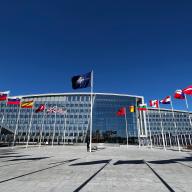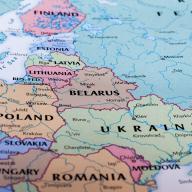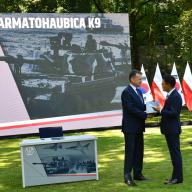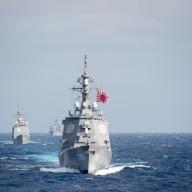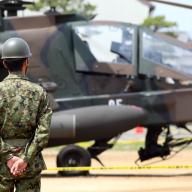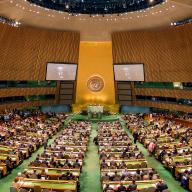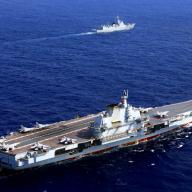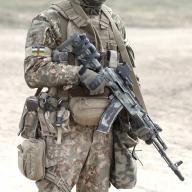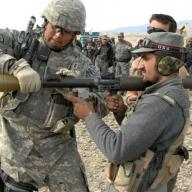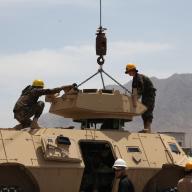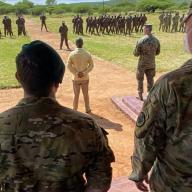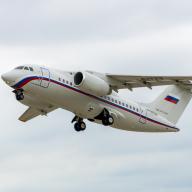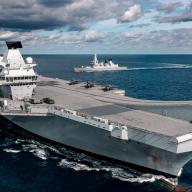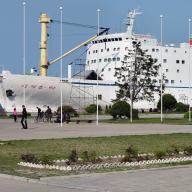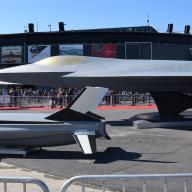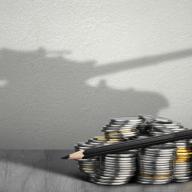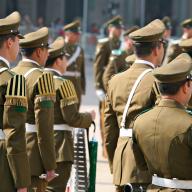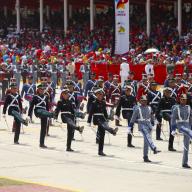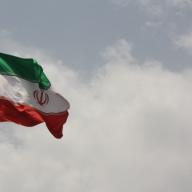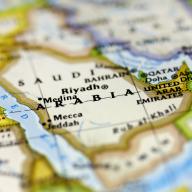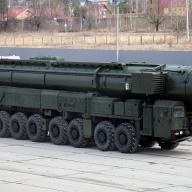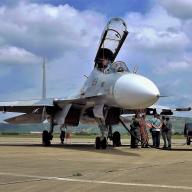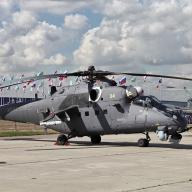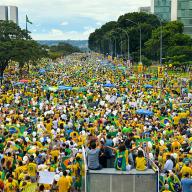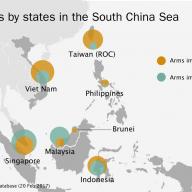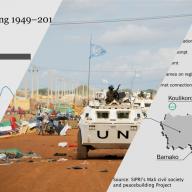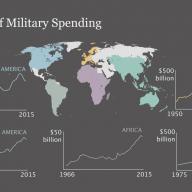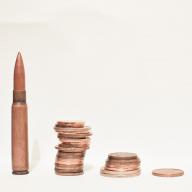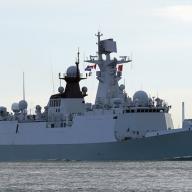NATO’s new alliance-wide spending target of 5 per cent of GDP sends a strong political message, but at what cost?
Related commentary: Arms and military expenditure
Iraq since the invasion: 20 years in SIPRI data
To commemorate the upcoming 20th anniversary of the invasion of Iraq on 20 March, SIPRI has prepared this Topical Backgrounder along with an Interactive chronology of security developments in Iraq spanning from 2002 to 2021. These materials are components of a larger collection of new materials that SIPRI is creating to commemorate the anniversary.
Going private (equity): A new challenge to transparency in the arms industry
In the latest ranking of the world’s largest arms-producing and military services companies (the SIPRI Top 100), published in December 2022, two firms based in the United States—Peraton and Amentum—had recently been acquired by private equity firms. Both their arms sales were considered to have a high degree of uncertainty.
The proposed hike in Japan’s military expenditure
On 23 December 2022, the Japanese cabinet unveiled its 2023 budget for the Japanese Self-Defense Forces (JSDF), totalling 6.8 trillion yen ($52 billion). The new budget is 26 per cent higher than the JSDF budget for 2022, the largest year-on-year nominal increase in planned military spending since at least 1952.
Towards a more secure future through effective multilateralism based on facts, science and knowledge
Explainer: The proposed hike in German military spending
A few days after Russia launched its first airstrikes against the Ukrainian capital of Kyiv, the German Parliament convened for a special Sunday session. German Chancellor Olaf Scholz took the floor and, within half an hour, did away with decades of political restraint and ushered in a new era of German foreign and security policy.
Arms transfers to conflict zones: The case of Nagorno-Karabakh
The conflict between Armenia and Azerbaijan over Nagorno-Karabakh escalated in 2020 into a six-week war in which an estimated 5700 people died. The war was not completely unexpected as deadly skirmishes have occurred regularly since the previous full-scale war between the two states ended in 1994.
Reassessing SIPRI’s military expenditure estimate for the United Kingdom
In November 2020, in the midst of the ‘second wave’ of COVID-19 and despite a projected 10.4 per cent decrease in the United Kingdom’s gross domestic product in 2020, the British Government announced a £16.5 billion budget boost for ‘defence’.
Autocracy is on the rise: Should we expect military spending to follow?
Autocracies are once again the global majority. The 2020 Democracy Report of the Varieties of Democracy Institute (V-DEM), ‘Autocratization surges, resistance grows’, raises the alarm that while the world in 2019 was substantially more democratic than it was in the 1970s, an ongoing trend of autocratization may reverse this scenario.
COVID-19: A new wave of European arms industry consolidation?
As coronavirus disease 2019 (COVID-19) has caused the most severe economic crisis since the 1930s, could we witness a new phase of consolidation within the Western and Central European arms industry? This SIPRI Essay gives an early glimpse at where these three factors stand after the ‘great lockdown’. It proposes that the European arms industry may be at the outset of a larger consolidation movement.
A cautionary tale of military expenditure transparency during the great lockdown
The coronavirus disease 2019 (COVID-19) pandemic has dramatically changed the world we inhabit. Not only has there been unimaginable human suffering worldwide, but the necessary protective measures implemented by governments around the world have caused an economic fallout far worse than the 2008–2009 financial crisis and unprecedented since the Great Depression of 1929.
The crucial role of the military in the Venezuelan crisis
In January 2019 Venezuela’s opposition-led National Assembly swore in congressman Juan Guaidó as the country’s interim president. Guaidó’s claim to power is a severe blow against the already weakened government of Nicolás Maduro, whose re-election as president in May 2018 was widely rejected by the international community and deemed illegitimate by over 50 foreign governments.
To stay or not to stay: Will Europe’s new trade initiative make a difference for Iran?
‘Today we have taken a significant step forward in delivering our commitment under the Iran nuclear deal to preserve sanctions relief for the people of Iran.’ These were the words of Jeremy Hunt, Foreign Secretary of the UK, as he introduced the so-called Special Purpose Vehicle (SPV), which is the latest attempt by the E3 (France, Germany and the UK) at preserving the 2015 Iran nuclear deal, or the Joint Comprehensive Plan of Action
Saudi Arabia, armaments and conflict in the Middle East
This topical backgrounder puts a spotlight on armament developments in Saudi Arabia, the country with the highest levels of military spending and arms imports in the Middle East. It aims to contribute to the efforts by SIPRI to gain a better understanding of the impact of militarization on security, conflict, peace and development in the region.
How much does Russia spend on nuclear weapons?
This topical backgrounder begins with an overview of Russia’s large-scale nuclear modernization programme, which started after the adoption of its state armament programme for 2011–20. It then outlines Russia’s nuclear institutions and how the expenditure is managed within Russia’s federal budget and provides an estimate of Russian spending on nuclear weapons between the years 2010 and 2016.
Increased international transparency in military spending is possible
On 20 October the First Committee of the United Nations General Assembly will discuss the annual report by the UN Secretary-General containing military expenditure data submitted by UN member states. In keeping with the trend seen in recent years, the number of UN member states participating in the reporting process for 2017 is comparatively low. However, analysis by SIPRI indicates that many non-participating member states, including countries in sub-Saharan Africa, now release much of the relevant data into the public domain.
The 2015 UN Register on Conventional Arms: still time to improve
Following the trend in 2012–14, 2015 is likely to be another disappointing year for transparency in arms transfers.
Debating the future of the German arms industry, again
Germany is, once again, debating the future of its arms industry, with long-held state support for arms production within Germany appearing to crumble.
Lessons from the post-cold war transformation of East Central Europe’s arms industry
Arms production was the backbone of the Soviet-type command economy systems in East Central Europe (ECE), but with the collapse of the Eastern bloc, arms makers faced a drastic disruption in their economic, political and social environment.
Future challenges in the monitoring of international arms transfers
Western governments and defence companies are adapting to the effects of the 2008 economic crisis by devising new strategies to increase international arms sales.
Deciphering China’s latest defence budget figures
On 4 March the Chinese Government presented its 2014 budget to the National People's Congress (NPC), but it does not accurately represent the total amount spent by China on its military.
Balancing transparency and national security
When governments are less than transparent about their military budgets, this has serious ramifications for democracy and security.
The myth of Sisyphus and the security burden of the Middle East
Despite research showing that military spending does not prevent wars, world military spending has been stable at roughly three per cent of global GDP since 1990.
Weighing the benefits of military versus civilian research in the European Union
The EU's attempt to fight the economic crisis by shifting research money to the defence sector is highly questionable.
Is an arms race just a race to the bottom?
The arms race to the bottom—when states willingly arm themselves even when evidence suggests they should disarm—has begun to shape states' military spending.
Will the arms trade treaty be stuck in the past?
With two days of talks to go, the draft of an arms trade treaty (ATT) being negotiated in the UN looks dangerously likely to be a relic before it ever comes into force.
Looking back to ensure future progress: developing and improving multilateral instruments to control arms transfers and prevent illicit trafficking
Between July and September this year, the international community will be faced with the daunting prospect of concluding negotiations on an international arms trade treaty and a review of the implementation of the United Nations programme of action on small arms and light weapons.
Libya: lessons in controlling the arms trade
As the violence in Libya escalates and the international community examines how to respond to internal conflict and human rights violations, arms supply should be analysed.







